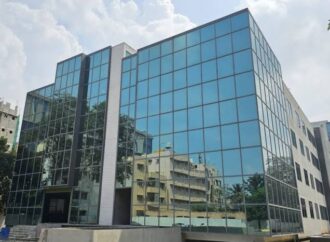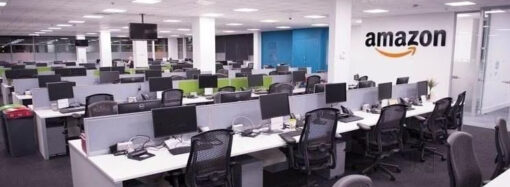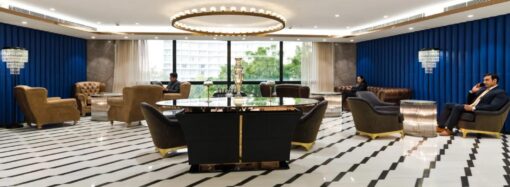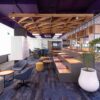Explore the crucial role of health and wellness in enhancing Productivity within flexible workspaces. Dive into ergonomic designs, mental well-being, and environmental wellness, supported by recent trends and statistics. Learn how fostering a healthy environment can attract and retain members, ensuring long-term success for flex workspaces.
In contemporary work culture, flexible workspaces, also known as shared or coworking spaces, epitomise flexibility and innovation. These spaces cater to freelancers, remote employees, startups, and large corporations seeking dynamic, cost-effective office solutions. While the primary focus has often been on flexibility, productivity, and collaboration, an emerging trend is the emphasis on health and wellness. Understanding the interplay between health, wellness, and productivity can significantly enhance the appeal and efficacy of flex workspaces.
Health and Wellness in the Workplace
Maintaining health and wellness is integral to a productive workforce. According to the World Health Organization (WHO), a healthy workplace is one where workers and managers collaborate to protect and promote all workers’ health, safety, and well-being. This is crucial because a healthy work environment reduces absenteeism and healthcare costs and boosts morale, productivity, and employee retention.
Physical Health in Flex Workspaces
Ergonomics and Workspace Design
Poor ergonomic conditions can lead to musculoskeletal disorders, a leading cause of workplace injuries and absenteeism. Flex workspaces, with their diverse furniture and equipment range, offer excellent opportunities to incorporate ergonomic solutions. Adjustable chairs, sit-stand desks, and ergonomic keyboards can reduce injury risk and improve comfort and productivity.
Movement and Physical Activity
Sedentary behaviour is a significant health risk. Flex workspaces can counter this by encouraging movement and physical activity. Some coworking spaces incorporate standing desks, treadmill desks, and dedicated exercise areas. According to the American Heart Association, even short bursts of physical activity can be beneficial. Pushing your team members to take short breaks for walking or stretching can positively impact their health and productivity. Flex workspaces can foster this by providing amenities such as on-site gyms, yoga studios, or partnerships with nearby fitness centres.
Mental Health and Well-Being
Stress Reduction
Workplace stress significantly impacts mental health and productivity. A study by the American Institute of Stress revealed that 83% of US professionals suffer from work-related stress. Flex workspaces can mitigate this by offering a relaxed and flexible work environment. The ability to choose where and when to work can reduce stress and improve work-life balance.
Community and Social Interaction
Social interaction is crucial for mental well-being. Flex workspaces foster community and unite individuals from diverse backgrounds and industries. Regular social events, networking sessions, and collaborative projects can enhance social interaction and reduce feelings of isolation.
Quiet Zones and Relaxation Areas
While social interaction is essential, so is the ability to concentrate and relax. Flex workspaces can provide quiet zones or relaxation areas where individuals can escape the hustle and bustle. Flexible spaces generally have comfortable seating, calming decor, and amenities like coffee or tea stations, helping employees recharge and maintain their mental well-being.
Environmental Wellness
Indoor Air Quality
Indoor air quality significantly impacts health and productivity. Poor air quality can lead to respiratory problems, headaches, and fatigue. Flex workspaces can address this by ensuring proper ventilation and using air purifiers. Incorporating plants into the workspace can enhance indoor air quality and deliver a more pleasant environment. A study by Harvard University found that improving indoor air quality can lead to a 61% increase in cognitive function.
Natural Light and Biophilic Design
Exposure to natural light improves energy levels, mood, and productivity. Flex workspaces can maximise natural light by using large windows, skylights, and open layouts. Additionally, biophilic design elements, such as incorporating natural materials and greenery, can create a more inviting and health-promoting environment.
Nutritional Wellness
Healthy Eating Options
Access to healthy food is another important aspect of wellness. Flex workspaces can provide nutritious snacks and meals through on-site cafes or partnerships with local eateries. Offering options like fresh fruits, salads, and whole-grain snacks promotes healthy eating habits among employees.
Hydration
Proper hydration is essential for maintaining cognitive function and overall health. Flex workspaces can encourage hydration by providing easily accessible water stations. Offering flavoured water or herbal teas can also promote regular water intake.
Integrating Technology in Health and Wellness
Health and Wellness Apps
Technology plays a significant role in promoting health and wellness in flex workspaces. Health and wellness apps can provide employees with tools to track physical activity, manage stress, and maintain a healthy diet. Flex workspaces can encourage using these apps by offering incentives or incorporating them into wellness programs.
Virtual Wellness Programs
Virtual wellness programs can effectively engage remote workers or those who prefer a flexible schedule. These programs can include online fitness classes, meditation sessions, and wellness workshops. By offering virtual options, flex workspaces can ensure all employees access wellness resources regardless of location.
Conclusion
Integrating health and wellness into flex workspaces is necessary in today’s work culture. Prioritizing physical health, mental well-being, environmental wellness, and nutritional wellness can create a productive and positive environment. The benefits are clear: healthier, happier, more engaged and productive employees. As the demand for flex workspaces grows, incorporating health and wellness features will be crucial for attracting and retaining members and ensuring long-term success.
Recent Trends and Statistics in the Indian Flex-space Market
* Growing Health and Wellness Programs: According to a report by CBRE India, there has been a significant rise in demand for health and wellness programs in flex workspaces, with over 70% of operators now offering wellness initiatives as part of their services.
* Focus on Mental Health: A 2023 survey by JLL India revealed that 65% of flex space operators have introduced mental health support programs, including access to mental health professionals and stress management workshops.
* Ergonomic Enhancements: As per Knight Frank India, 55% of new flex space setups in 2023 incorporated advanced ergonomic furniture, highlighting the increasing awareness and implementation of ergonomic solutions.
* Emphasis on Air Quality: A study by Gensler found that 80% of flex spaces in metropolitan cities like Mumbai and Bengaluru have installed air purification systems to improve indoor air quality, following increased awareness post-pandemic.
* Biophilic Design Implementation: According to Colliers International, the adoption of biophilic design in flex spaces has grown by 40% year-on-year, with operators incorporating more natural elements to enhance employee well-being.
By incorporating these recent trends and statistics, flex workspaces can better align with the market’s evolving demands and continue to provide environments that foster productivity and well-being.























